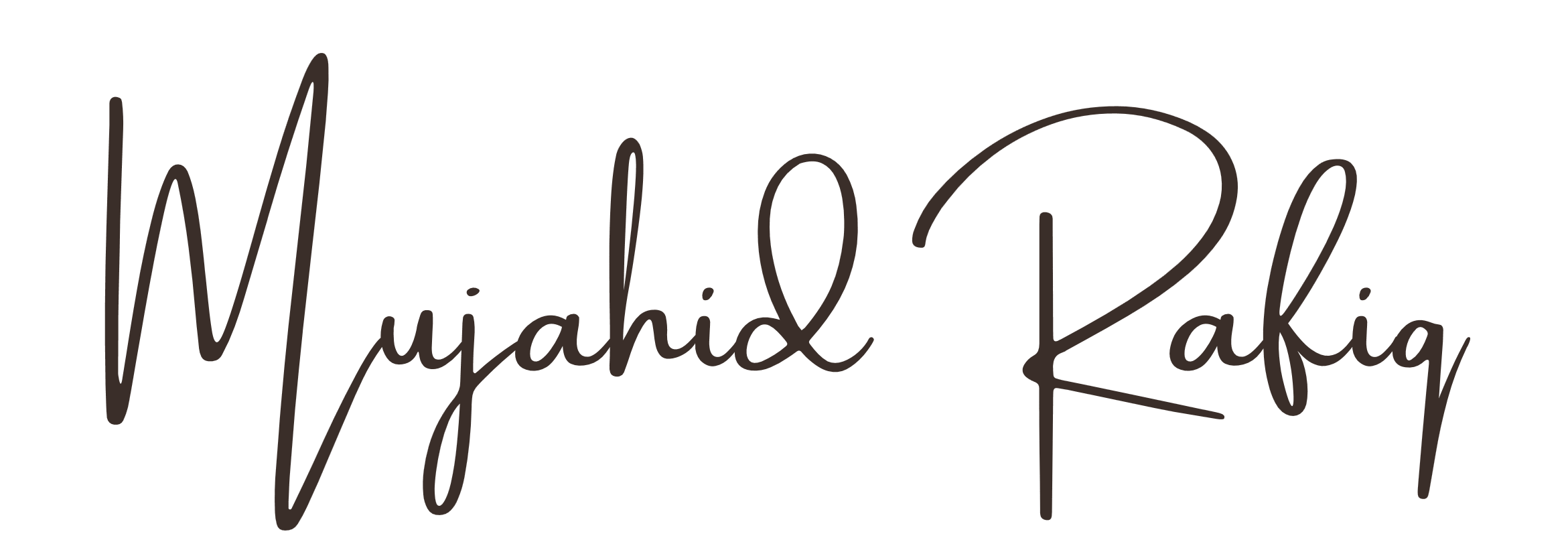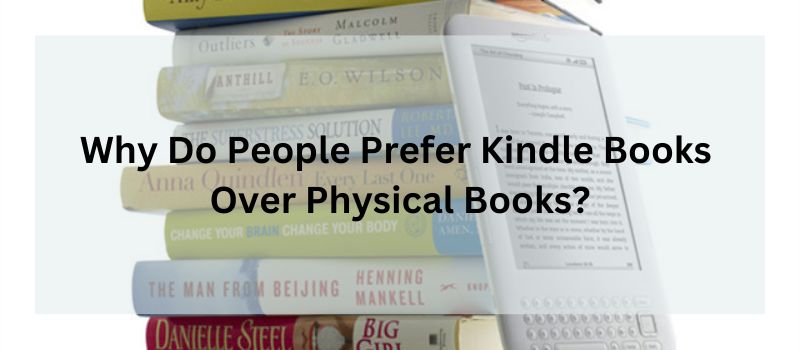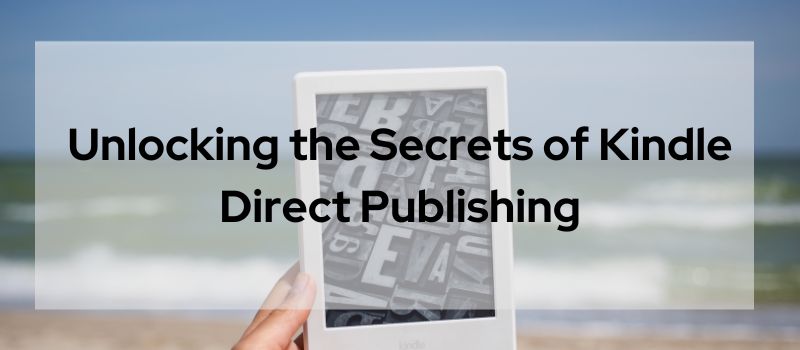As an avid reader and Amazon Kindle expert, I constantly scour the Kindle bookstore for my next great read. But with over 5 million ebook titles on Amazon, the sheer options can feel overwhelming! So let me help you quickly discover your perfect next book from the Kindle bookstore.
Whether you love literary fiction, addictive thrillers, laugh-out-loud rom-coms, or fascinating non-fiction, in this post, I’ll share my top tricks as an Amazon Kindle book nerd for finding hidden book gems that speak to your unique reading tastes.
With my insider strategies, you’ll go from aimlessly browsing the vast Kindle store to quickly zeroing in on the most compelling new releases, hidden indie titles, and forgotten backlist books that match your preferences. Say goodbye to book FOMO, and let’s start building your future favourite Kindle library!
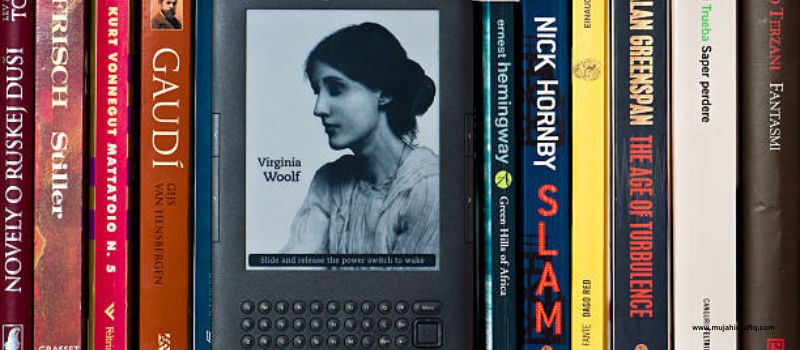
Contents
Why Do People Prefer Kindle Books Over Physical Books?
As an Amazon Kindle expert, I find that people prefer Kindle books over physical books due to the convenience and cost savings of e-reading. With instant wireless delivery from the massive Kindle bookstore, ebooks are incredibly portable and accessible on any device.
Critical features like adjustable text size, built-in dictionaries, highlighting, and Whispersync tracking also optimize the reading experience. Kindle books are generally cheaper than print, and Amazon Prime members get unlimited access to over a million titles with Kindle Unlimited.
Ultimately, the Kindle platform provides book lovers with a more customizable, integrated and eco-friendly approach to reading.
Convenience of Digital Reading
One primary reason people love their Kindle is simply how incredibly convenient it makes reading books compared to print. Here are some of the main ways Kindle provides a smoother reading experience:
- Portability – The Kindle device and smartphone apps are lightweight and can hold your entire digital library. You can easily take thousands of books anywhere without hauling around heavy hardcovers or paperbacks. It makes reading while travelling way easier.
- Instant Delivery – With ebooks, you can read the latest bestseller within seconds of purchase—no need to make a trip to the bookstore or wait for delivery. The book is available instantly over WiFi or wireless networks.
- Read Anywhere – You can read Kindle books on devices, phones, tablets or e-readers. This flexibility lets you read in more places and positions than just holding up a book. You can read one-handed, in dim light, outside, or in any comfortable way.
In today’s busy, mobile world, the portability and convenience of carrying an entire library in your pocket make Kindle tough to beat.
Features of Kindle Books
Beyond just being digital versions of texts, Kindle books offer some cool features that improve the overall reading experience:
- Adjustable Text Size – You can easily make text bigger or smaller on a Kindle for greater accessibility and comfort. It is super helpful for those with vision issues.
- Built-In Dictionary – There’s no need to interrupt your reading to look up a word. Kindle has an integrated dictionary to provide definitions instantly with just a tap.
- Notes and Highlights – It’s simple to highlight passages and take digital messages in the Kindle app. It makes retaining critical information more seamless.
The intuitive features of Kindle books optimize and enhance texts for digital reading. The experience feels like an upgrade compared to just words on a page.
Cost Savings of Kindle Books
Another significant benefit of Kindle books is that they can save you some serious cash compared to print:
- Lower Prices – Most new-release ebooks cost less than the hardcover or paperback version, sometimes up to half off. These savings add up for avid readers who buy a lot of books.
- Kindle Unlimited – For $9.99 per month, you get unlimited access to over a million ebook titles that you can freely browse. It’s a fantastic deal for bookworms.
Going digital allows you to build an entire library for a fraction of what all those print editions would cost. The savings motivate many book lovers to switch to e-reading.
Seamless Amazon Integration
Unlike essential ebook files, Kindle titles come packed with convenient Amazon integration:
- Automatic Sync – Your books, last page read, highlights, and notes sync across devices. Start reading on your phone on the bus, then pick up where you left off on your Kindle at home.
- Whispersync – This tracks your reading progress across multiple devices so you can switch seamlessly between phone, tablet, e-reader, etc., without losing your place.
- Goodreads – See ratings, reviews, and discussions for Kindle titles from the Goodreads community to discover your next favourite book. You also see what your friends are reading.
Buying Kindle books means getting all the ecosystem benefits of Amazon services together in one smooth, connected experience.
Environmental Sustainability
For the eco-conscious, e-reading is also often a greener choice than print books:
- Less Waste – According to one estimate, each print book produces about 7.5 pounds of carbon emissions from materials, printing, and shipping. Digital reading eliminates all that waste and pollution.
- Reusable Devices – Kindles can easily last 5+ years. Research suggests that the overall impact of one e-reader equals about 30-40 print books. Reusing an e-reader is greener than continually buying new books.
Opting for ebooks reduces your environmental footprint by going paperless. E-readers last for years, minimizing waste. Every digital book makes an impact.
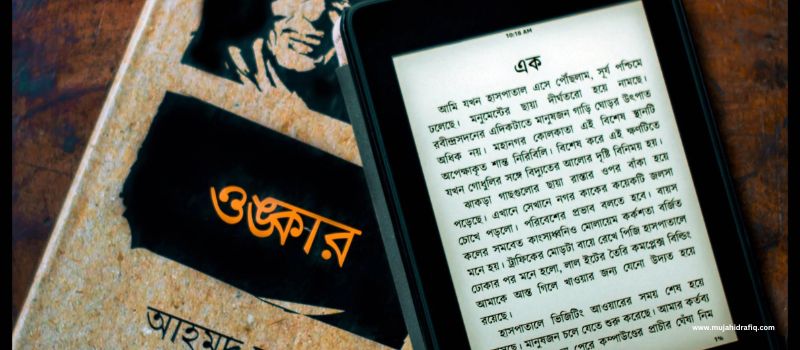
Comparison of Print Books vs. Kindle Books
However, traditional print books still have advantages over digital Kindle books. Let’s look at the key differences:
Tactile Experience of Print Books
While many love the practicality of Kindle, some still prefer the tangible sensations of print books:
- Physical Appeal – Many readers find the smell, texture, weight and ink on paper provide more sensory satisfaction. Print creates a nostalgic, intimate reading experience.
- Notetaking – Avid note-takers may prefer scribbling in the margins of print books. However, Kindle also allows digital highlighting and annotations.
For true bibliophiles, holding and feeling a book in your hands offers an unrivalled experience. But Kindle tries its best to replicate much of that tactile enjoyment digitally.
Limitations of Kindle Books
There are a few shortcomings of Kindle books compared to print editions:
- Illustrated Books – Books with heavy graphics, photos, and illustrations, like art books, don’t always fully translate to the digital format. The print has a fuller visual impact.
- Availability – Print may offer a more comprehensive selection and availability in some niche genres than Kindle. Not every print book is available in digital form.
- New Releases – Major new bestsellers typically launch simultaneously in print and Kindle. But occasionally, the pattern gets priority or exclusive limited editions.
Print may be the only format available for certain visual-focused books or hard-to-find titles. But Kindle’s catalogue is vast and constantly catching up.
Print Books as Gifts
Physical books also tend to make more meaningful gifts:
- Sentimental Value – A beloved paperback can be treasured for decades to come. Many enjoy presenting books as milestone gifts for graduations, holidays, etc.
- Personalization – The giver can inscribe print books with a personal note or autograph. It isn’t easy to replicate that personal touch in digital gifts.
- Display Value – Print book collections proudly displayed on shelves show off your literary tastes and interests. Kindle titles don’t provide that same visual statement.
While impractical for daily reading, print books are keepsakes. But gifting Kindle titles also appeals since it gives the recipient instant access.
DRM Restrictions on Kindle
One common complaint about Kindle ebooks is tighter restrictions due to DRM technology:
- Limited Sharing – DRM limits freely sharing, loaning or transferring Kindle books to discourage piracy. But this also restricts the sharing of books within families.
- Device Restrictions – Due to DRM, reading Kindle books outside of Amazon’s official apps and e-readers can be challenging. Switching to other devices or platforms is limited.
- Registration Limits – You can register up to 6 devices with one Kindle account, but this cap can be restricting for some. Removing old devices to add new ones is a hassle.
DRM does help protect authors’ copyrights. But these protections also limit some use cases compared to paperbacks. However, DRM won’t be a major inconvenience for most readers.
Future Outlook for Digital Books like Kindle
Where are ebooks headed in the future? Here are some likely trends to expect:
Rising Popularity of Ebooks and E-Readers
Ebooks are only continuing to grow in adoption globally as more people go digital:
- Ebook Sales Increasing – According to Pew Research, ebook readership in the U.S. rose from 17% in 2012 to 25% by 2018. More readers are choosing digital as their preferred format.
- Advanced E-Readers – Devices keep improving with higher resolution screens, adjustable lighting, waterproofing and more premium features. The technology is nearly on par with print books.
- Global Growth – Developing countries are seeing explosive growth as internet access spreads. Rising digital literacy and mobile usage make these markets primed for ebook adoption.
Don’t expect print books to vanish entirely, but ebooks will likely dominate long-term given their practical advantages and steadily rising popularity worldwide.
Potential Growth Areas
We can expect more ebook innovation branching out into these new territories:
- Enhanced Ebooks – Digital books are evolving beyond text into more interactive media with audio, video and link integration. It could create a multimedia reading experience.
- Education Adoption – Etextbooks are a promising area for growth. Updatable digital texts provide new teaching capabilities and instant distribution that can enhance learning.
- Global Reach – Ebooks still have massive potential to bring information access to developing areas. Digital formats make books more affordable and available.
Ebooks are far more than replicas of print. New functionalities like multimedia, connectivity and accessibility allow the medium to evolve.

Impact on the Publishing Industry
The rise of digital is an enormous transformation for the publishing business model:
- More Digital-First – Publishers develop digital-first strategies and release timelines to serve growing ebook demand better. The print has become secondary.
- Bookstore Decline – Print sales shifting online combined with ebook dominance has steadily forced many brick-and-mortar bookstores to close over the past decade.
- Self-Publishing Access – For aspiring authors, self-publishing ebooks provides an easier path than trying to land a traditional print deal. Kindle Direct Publishing has opened doors.
Publishers must quickly adapt and leverage technology like ecommerce, digital marketing and data analytics or fade. The industry landscape has been completely changed.
FAQs
Q1: How do I buy Kindle books?
Access Amazon’s Kindle store on your desktop, mobile browser, or Kindle app to buy Kindle books. Search or browse for titles, select your text, click “Buy Now”, and log into your Amazon account. The ebook will automatically sync to your Kindle library and devices. Kindle books can be purchased on Amazon 24/7.
Q2: What devices support Kindle books?
You can read Kindle books on any Kindle e-reader, and the free Kindle reading apps for iOS, Android, PC, and Mac. It allows you to seamlessly access your library across devices like phones, tablets and computers.
Q3: How much do Kindle books cost?
Most new release titles cost $9.99-14.99 for the Kindle version. Many backlist and indie books are under $5. Kindle Unlimited offers unlimited reading of over 1 million titles for $9.99 monthly. Kindle books are generally 20-50% cheaper than print versions.
Q4: Can I get library books on my Kindle?
You can borrow Kindle books from their catalogue if your local library supports Kindle ebook lending. Search on your library website or apps like OverDrive and Libby to find available titles. Check them out digitally and read on Kindle.
You can gift individual book titles to someone else’s Kindle library to share Kindle books. For Prime members, you can enable sharing from your library with up to two people, giving access to all your purchased titles.
Q6: Do I need WiFi to read Kindle books?
Once downloaded, you can access and read Kindle books offline without WiFi. But you’ll need an internet connection to buy new titles, sync your library across devices, or download borrowed books. Downloaded Kindle books can be read anywhere.
Conclusion
With so many great reads waiting to be discovered, finding your next satisfying Kindle book doesn’t have to feel like looking for a needle in a haystack. As an avid Kindle fan, I want to ensure your reading life is fulfilling and fun.
By leveraging Amazon’s powerful Kindle bookstore tools and my recommended tips in this post, you can quickly become a savvy book selector who spots the most enticing new titles in any genre you love.
Don’t settle for boring books – find that unputdownable 5-star read you’ll rave about to friends! And if you need any other Kindle bookstore recommendations from this Amazon expert, don’t hesitate to reach out. Happy reading, bookworms! Now, browse those virtual shelves and download something extraordinary. Your dream Kindle library awaits you!
Read More:
Are books free with Kindle? Guide by Amazon Kindle expert
How many eBooks can an Amazon Kindle 8GB hold | A guide by Amazon Kindle experts
